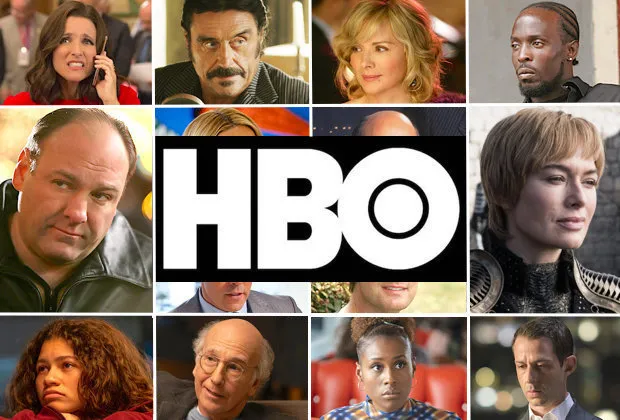In the ever-evolving landscape of television, one name stands out as a pioneer, a trailblazer that reshaped the way we consume entertainment: Home Box Office, better known as HBO. This American premium television network, a crown jewel under the Warner Bros. Discovery umbrella, has a legacy that spans half a century, forging its path from humble beginnings to becoming a global powerhouse.
HBO’s journey began in the summer of 1971, when Sterling Communications, originally founded in 1950 as Sterling Movies U.S.A. and then under the stewardship of Time Inc., dared to envision a revolutionary concept: subscription-based television. This ambitious endeavor sought to transform the way viewers experienced content, and little did they know that they were about to change the television landscape forever.
On November 8, 1972, HBO made its historic debut, initially serving northeastern Pennsylvania before rapidly expanding its coverage area to encompass much of the northern Mid-Atlantic and southern New England regions. As the first television service to be directly transmitted and distributed to individual cable systems, HBO sparked a cable television revolution.
HBO wasn’t content with just one “first.” It blazed a trail by becoming the first television channel worldwide to transmit its signal via communications satellite. This groundbreaking achievement marked a pivotal moment in the history of television broadcasting, setting the stage for global connectivity.
Not resting on its laurels, HBO also became the first pay television network to introduce a standalone companion service, Take 2 (now defunct), and later expanded its family with Cinemax and Festival. These multiplexed channels provided viewers with a diverse array of content, setting HBO apart as a true innovator.
With groundbreaking content came critical acclaim. HBO etched its name in history as the first cable-originated network to win prestigious Emmy, Golden Globe, and Peabody Awards. This recognition showcased HBO’s commitment to fostering creative autonomy for program creators, allowing them to push boundaries and explore mature subject matter.
From its American roots, HBO expanded its influence beyond borders. In the United States alone, it boasts seven multiplex channels, each catering to different tastes and interests. Internationally, HBO’s global footprint extends through twelve active and three defunct international services. Whether owned directly by Warner Bros. Discovery or operated through strategic partnerships, HBO’s presence graces four continents.
HBO’s remarkable journey, from its inception in 1972 to its current status under Warner Bros. Discovery, Inc., epitomizes the spirit of innovation and fearless exploration. As the oldest and longest continuously operating subscription television service in the United States, HBO’s legacy is a testament to its unwavering commitment to quality, creativity, and pushing the boundaries of what television can be.
Success Story of HBO
The story of HBO, one of the most iconic names in entertainment, is a tale of innovation, perseverance, and the power of a bold idea. Born from the vision of Charles Dolan, a former marketer and film distributor, HBO has come a long way since its inception on December 1, 1965.
The Birth of Manhattan Cable TV Services
Charles Dolan was no stranger to the world of television. Before HBO, he launched Teleguide, a closed-circuit television service that distributed information, news, interviews, and feature interstitials to hotels, apartment buildings, and office buildings in the New York metropolitan area. This venture laid the foundation for his later groundbreaking endeavors.

But it was in 1966 that he made a move that would change the television landscape forever. Dolan’s company, Sterling Information Services, began offering cable services in Manhattan. This marked the birth of the first underground cable television system in the United States.
Instead of the traditional approach of hanging cables on telephone poles, Dolan’s team laid new cables beneath the streets of Manhattan and into buildings. This not only complied with city ordinances but also ensured better signal quality in the city’s towering skyscrapers. This innovative infrastructure was the first step towards the realization of the grand vision that would become HBO.
The Power of Partnership with Time-Life
Despite their innovative approach, Sterling Manhattan Cable Television faced challenges. They struggled to attract subscribers and were burdened with the high cost of laying underground cables. Charles Dolan was determined to keep the company afloat, but he needed a partner with deep pockets and a shared vision.
In 1971, during a family vacation aboard the Queen Elizabeth 2 en route to France, Dolan conceived an audacious plan—a cable-originated television channel that would change the entertainment landscape. The idea was codenamed “The Green Channel,” and it involved offering unedited movies and live sports events without advertising interruptions for a flat monthly fee. Dolan also proposed partnering with other cable providers to expand the service’s reach.
To bring this vision to life, Dolan secured financial backing from Time-Life, Inc., marking the beginning of a partnership that would reshape television. Time-Life’s support not only provided the necessary funding but also brought invaluable expertise and resources to the table.
A Skeptical Audience and a Name That Stuck
In the early 1970s, the cable industry was under scrutiny, and pay television services faced significant resistance. Initial surveys showed that the majority of consumers were opposed to paying for television. However, Dolan and his team were undeterred.
They took a creative approach to gauge potential consumer interest. Time-Life sent out a direct mail research brochure to residents in six U.S. cities, asking their opinions on the concept of a subscription television service. An overwhelming majority of those surveyed (approximately 99%) opposed the idea of paying for television. Only 1.2% favored the concept and expressed interest in being paying subscribers. In a second survey conducted by an independent consultant, 4% of respondents polled said they were “almost certain” to subscribe to such a service. A subsequent test conducted by Time-Life in Allentown, Pennsylvania, had salesmen present the pay channel concept to residents by offering them free service for the first month and a refundable installation fee; half of all interviewed residents had expressed interest in purchasing the conceptual service with the offered incentives.
The name “Home Box Office” was originally a placeholder, but it stuck. It conveyed the idea that viewers could access movies and events from the comfort of their homes—a revolutionary concept at the time.
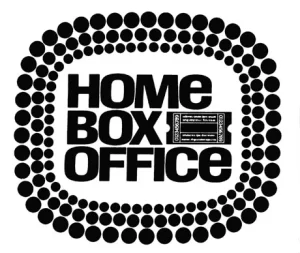
Overcoming Obstacles to Launch
Launching HBO came with its share of challenges. New York City’s franchise agreement initially prohibited the telecast of theatrical films on pay television. To circumvent this, rather than launch Home Box Office over Sterling Manhattan, Dolan chose to scout another city with two competing cable franchises to serve as its inaugural distribution system.
Allentown, Pennsylvania, was the chosen location, but a television blackout radius due to the Philadelphia 76ers’ games posed a problem. Since HBO planned to carry regular-season and playoff games from the National Basketball Association (NBA), any 76ers games that the service aired would have been prohibited from being shown within Allentown. Time-Life subsequently agreed to an offer by Teleservice president John Walson to launch HBO on the company’s Wilkes-Barre system, located outside of the 76ers’ blackout radius. (HBO later signed on to Teleservice’s Allentown system as its second cable affiliate in February 1973.)
The Battle with Theatre Owners
Not everyone was thrilled about HBO’s arrival. The National Association of Theatre Owners (NATO) attempted to block Sterling’s application to build three community antenna relay (CARS) facilities it planned to use to transmit HBO. They were concerned that pay cable service would compete unfairly with movie theaters by using revenue from cable systems to “siphon” content and, by association, audiences from theatres.
However, their efforts were in vain, and HBO continued its journey to reshape the television landscape. Overcoming regulatory hurdles and industry skepticism, Home Box Office emerged as a pioneering force in the world of cable television.
HBO: From Humble Beginnings to Expanding Horizons (1972-1975)
In 1972, something extraordinary quietly made its debut on the television scene, and its name was HBO – Home Box Office. This was not the flashy, star-studded launch we’ve come to expect from entertainment giants today. HBO entered the scene with a modest launch, almost unnoticed by the media. However, this unassuming beginning marked the start of a journey that would change the way we consume television forever.
The Quiet Launch
HBO’s launch was so understated that it barely made a blip on the media radar. There were no grand press conferences, no star-studded events. Instead, the launch was promoted through simple print advertisements in the Wilkes-Barre Times Leader. Even the city administrator of Wilkes-Barre declined an offer to attend the launch ceremony.
Facing Nature’s Wrath
To add to the drama of the launch, Mother Nature had her say. Strong winds, produced by a storm system, knocked over the Pan Am Building reception dish in Midtown Manhattan, just hours before HBO was set to go live. This dish was crucial for relaying the Home Box Office signal to microwave towers linked to Teleservice’s Wilkes-Barre headend. Fortunately, a technician was dispatched to repair the antenna just in the nick of time, making it ready for the inaugural telecast.
The Birth of HBO
Home Box Office officially went live at 7:30 p.m. Eastern Time on November 8, 1972. The first program to grace the screens of the initial 365 subscribers in Wilkes-Barre was a National Hockey League (NHL) game between the New York Rangers and the Vancouver Canucks. Following this sporting event, viewers were treated to the 1971 film “Sometimes a Great Notion,” starring Paul Newman and Henry Fonda.
Early Programming
In the early days, HBO’s programming was minimal but groundbreaking. It mainly featured theatrical films, including recent releases and event programming. Each evening’s schedule was designed for either a double feature or a combination of sports or special events and a movie. HBO secured licenses from various film studios, bringing popular titles to its subscribers.
Sports, the Game Changer
One of HBO’s key differentiators was its extensive sports coverage. This laid the foundation for future sports networks like ESPN. HBO’s sports lineup included Major League Baseball games, college basketball, World Football League, American Basketball Association, soccer, golf, and more. Notably, HBO’s boxing coverage became a flagship sports program, starting with the world heavyweight championship bout between George Foreman and Joe Frazier in 1973.
The Program Guide
Subscribers received “Home Box Office: Your Monthly Entertainment Guide,” later known as “HBO On Air” and “[The] HBO Guide.” This digest-sized program guide provided monthly programming highlights and daily listings, enhancing the viewing experience.
Expanding Reach and Challenges
Within two years of its launch, HBO expanded its regional reach, making it available in New York, New Jersey, Pennsylvania, and Delaware. However, HBO faced financial challenges as it struggled with fees paid to AT&T for its New York-based microwave link.
Wimbledon and Beyond
HBO continued to innovate in sports coverage, introducing regional coverage of the Wimbledon tennis tournament in 1975. This move marked a significant step in bringing sports events closer to viewers.
Time Inc. and Sterling Communications
Behind the scenes, Time Inc. played a crucial role in HBO’s growth. On February 28, 1973, Sterling Communications announced it would spin out HBO and associated assets into a new subsidiary, Home Box Office, Inc. Time Inc. received 9% of Sterling’s HBO equity and committed a $3-million direct investment in the subsidiary. Gerald M. Levin replaced Charles Dolan as the company’s president and CEO.
A Time of Expansion and Change
In May 1973, Time began to sell its controlling share of Sterling to Warner Communications for $20 million. However, this deal was terminated in June 1973. Instead, on July 19, 1973, Time Inc. reached an agreement to purchase and assume financial liabilities of Sterling Communications for $6.2 million. As a result, HBO became part of Time Inc.’s portfolio, marking a significant shift in the company’s ownership structure.
By April 1975, the service had around 100,000 subscribers within its four-state service area. This was just the beginning of HBO’s journey to redefine how we experience television. With its unique blend of sports, movies, and original programming, HBO had established itself as a pioneer in the world of cable television, setting the stage for the entertainment revolution that would follow.
Satellite Revolution: The Game-Changer (1975)
The turning point in HBO’s journey occurred on December 13, 1975, with the launch of the RCA Satcom domestic communication satellite. This event would change the cable television landscape forever, and HBO played a significant role in making it happen.
In the fall of 1974, Time Inc. and HBO began contemplating the idea of expanding HBO into a national pay television service. However, the monumental task of establishing an extensive infrastructure of microwave and coaxial telephone relay towers across all 50 states and U.S. territories was both costly and time-consuming. HBO’s existing microwave network was also challenging to maintain, especially during harsh winter weather conditions.
To overcome these obstacles, HBO turned to an innovative solution: geostationary communications satellites. By utilizing satellites to transmit HBO’s signal directly to cable providers throughout the United States, regardless of their location within or outside the existing microwave network, HBO opened up a new era of television distribution.
The Birth of Satellite Television (1975-1976)
On September 30, 1975, at 9:00 p.m. Eastern Time, HBO made history by becoming the first television network to continuously deliver its signal via satellite. The “Thrilla in Manila,” a heavyweight championship boxing match between Muhammad Ali and Joe Frazier, was the event that marked this momentous occasion.
HBO initially used Westar 1 for satellite transmissions before shifting to Satcom 1 when full-time commercial service began on February 28, 1976. With the introduction of satellite transmission, HBO extended its programming schedule, operating daily from 1:30 p.m. to 1:30 a.m. ET/PT.
This move allowed HBO to serve both the Eastern and Pacific Time Zones, offering viewers across the country the same programming at appropriate local times. It was a game-changer in the world of television distribution.
Pioneering Original Programming (1983)
While HBO had initially focused on movies and sports, 1983 marked a significant milestone as the network ventured into original scripted programming. “Not Necessarily the News” and “Fraggle Rock” were among the first original series to grace HBO’s lineup.
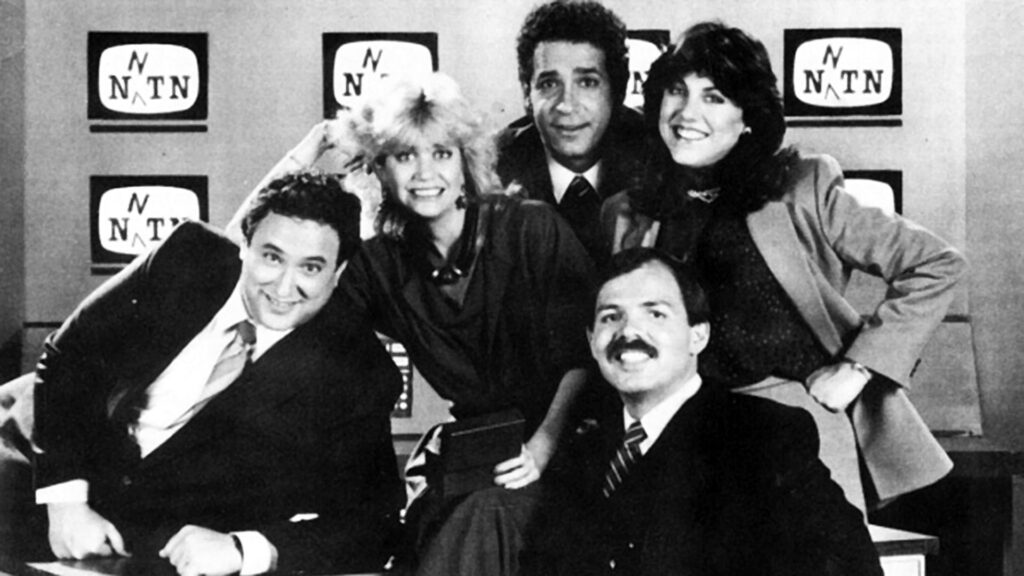
Additionally, in May 1983, HBO premiered “The Terry Fox Story,” its first-ever television movie. This biographical film set the stage for HBO to produce more original content and would eventually become the norm for premium cable channels.
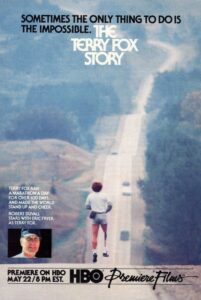
Rapid Expansion and Technological Advancements (1980s)
Throughout the 1980s, HBO’s subscriber base continued to expand exponentially. By 1987, the network was received by approximately 15 million subscribers across 6,700 cable systems nationwide. HBO’s success was further boosted by the 1988 Writers Guild of America strike, which highlighted the network’s inventory of first-run programming compared to traditional broadcast networks.
In 1989, HBO launched the “Simply the Best” promotional campaign, asserting its dominance in the pay television industry and comparing itself favorably to rivals like Showtime.
The Era of Time Warner Ownership and the Ascendance of Original Programming
The Birth of Time Warner (1989-1990)
In 1989, Warner Communications announced its intent to merge with Time Inc., a move that would forever change the landscape of entertainment. This merger, valued at $14.9 billion in cash and stock, was completed in 1990, giving birth to the conglomerate we now know as Time Warner. HBO, already a prominent player in the cable television industry, became a part of this media giant. This marked the beginning of HBO’s journey towards becoming an entertainment powerhouse.
Multiplexed Companion Channels (1991)
In 1991, HBO and Cinemax introduced a revolutionary concept – multiplexed companion channels. These additional channels offered distinct schedules with programming separate from their parent primary channels. It was a game-changer, giving viewers more choices and expanding the variety of content HBO could offer. Over time, this multiplexed approach grew to include channels like HBO Family, HBO Comedy, HBO Zone, and HBO Latino, catering to a diverse audience.
Digital Compression Technology (1993)
In 1993, HBO made history by becoming one of the first television services to transmit signals using digital compression technology. This innovation improved signal quality and paved the way for the launch of multiple HBO and Cinemax channels. It was a leap forward in delivering high-quality content to subscribers. This technological advancement solidified HBO’s reputation for staying at the forefront of broadcasting technology.
Content Advisory System (1994)
HBO took responsibility seriously, introducing a content advisory system in 1994 to provide specific information about potentially unsuitable content for children. This system allowed parents to make informed choices about what their children watched on the network. It was a step towards responsible broadcasting, demonstrating HBO’s commitment to its viewers’ well-being.
A Decade of Original Programming (1990s)
Throughout the 1990s, HBO gained a reputation for producing high-quality and irreverent original programming. Shows like “Tales from the Crypt,” “Dream On,” “Tracey Takes On…,” “Mr. Show with Bob and David,” and “Arliss” showcased the network’s commitment to innovative storytelling. HBO’s programming during this period was predominantly tailored towards a male audience, setting the tone for its unique brand of entertainment.
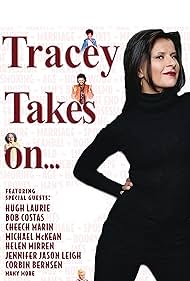
The Larry Sanders Show (1990s)
One of HBO’s flagship series in the 1990s was “The Larry Sanders Show.” Despite not achieving the same commercial success as major network programs, it enjoyed critical acclaim and a dedicated fan base. The show’s influence extended to other satire series and marked a shift towards celebrity guest appearances, absence of laugh tracks, and embarrassment-structured comedy. “The Larry Sanders Show” remains a testament to HBO’s willingness to take creative risks.
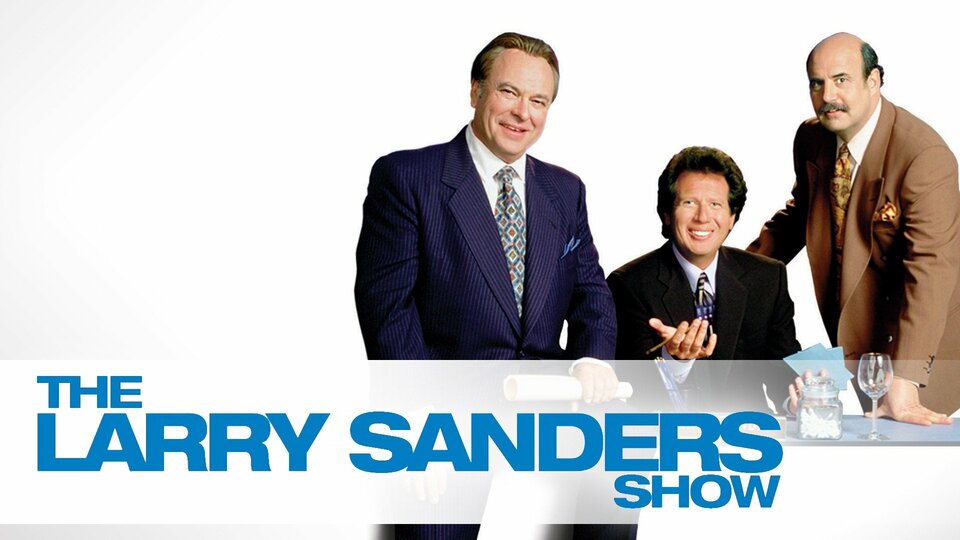
Award-Winning Excellence (1990s)
HBO’s original programs consistently earned critical acclaim and numerous Emmy and Golden Globe Award nominations and wins. The network’s commitment to quality writing and its subscription-only model allowed it to explore edgier content, including profanity, violence, and explicit scenes, which set it apart from traditional television. HBO’s dedication to excellence garnered industry recognition.
Oz and The Sopranos (1997-1999)
In 1997, HBO premiered “Oz,” a dramatic series set in a maximum-security prison, introducing gritty realism to narrative dramas. However, it was “The Sopranos” in 1999 that catapulted HBO to widespread critical success in the hour-long drama genre. The show received 111 Emmy nominations and 21 wins, breaking barriers for cable television. “Oz” and “The Sopranos” showcased HBO’s willingness to tackle complex and unconventional themes.
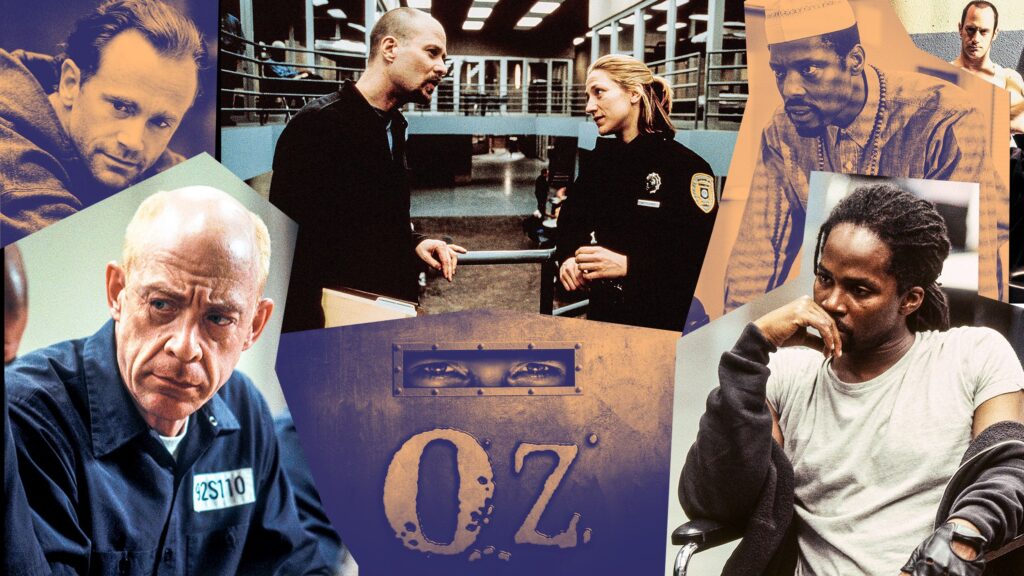
From the Earth to the Moon (1998)
HBO continued to push the envelope with ambitious projects like “From the Earth to the Moon,” a miniseries tracing the U.S. space program. This marked the beginning of HBO’s foray into high-profile historical films and miniseries, setting the stage for more iconic productions. “From the Earth to the Moon” demonstrated HBO’s commitment to diverse and ambitious storytelling.
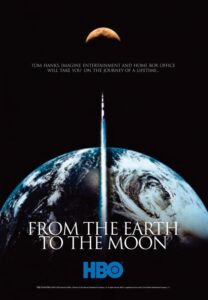
Sex and the City (1998)
In 1998, “Sex and the City” made its debut, focusing on the friendships and romances of four New York City women. The series received critical acclaim, leading to numerous Emmy nominations and wins, including Outstanding Comedy Series. It showcased HBO’s ability to cater to a wide range of audience tastes.
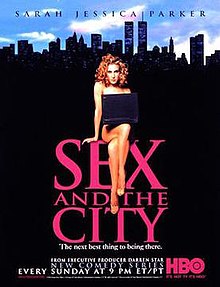
HBO Goes HD (1999)
HBO embraced high-definition technology, becoming the first American cable network to simulcast in HD in 1999. This move marked the network’s commitment to delivering superior visual experiences to its viewers. HBO’s investment in HD technology was a significant milestone in the history of television broadcasting.
Angels in America and More (Early 2000s)
In 2003, “Angels in America” became a record-breaking sensation at the Primetime Emmys, sweeping all seven major categories. HBO also ventured into mobile programming with HBO Mobile, providing information and content to subscribers. HBO’s commitment to diverse and groundbreaking content remained unwavering.
A New Era: Game of Thrones and Beyond (2010s)
The 2010s ushered in a new era for HBO with the massive success of “Game of Thrones.” The series, based on George R. R. Martin’s novels, earned critical acclaim and a record number of Emmy wins. Other hits, like “Girls” and “True Detective,” further expanded HBO’s diverse portfolio. HBO’s ability to adapt and innovate continued to shine.

Sesame Street and Beyond (2015-2020)
In 2015, HBO partnered with Sesame Workshop, bringing “Sesame Street” to the network and signaling a re-entry into children’s programming. HBO Max, launched in 2020, became the new home for Sesame Workshop content. HBO’s commitment to education and entertainment for all generations remained strong.
A Shift Towards Inclusivity (2016 and Beyond)
Under the leadership of Casey Bloys, HBO began producing content aimed at women, breaking away from its male-centric traditions. Shows like “Girls,” “Veep,” “Westworld,” “Euphoria,” and “House of the Dragon” showcased a commitment to inclusivity and diversity. HBO’s willingness to evolve and adapt to changing audience preferences demonstrated its forward-thinking approach.
Despite some initial resistance and backlash from satellite dish users, HBO’s decision to encrypt its signals set a precedent for content protection in the industry.
The Evolution of HBO and Its Journey Through Ownership Changes (2016–2021)
In the fast-paced world of entertainment, HBO has undergone a series of ownership changes and strategic shifts that have shaped its identity and offerings. From 2016 to 2021, the network experienced significant transformations that influenced its programming, distribution, and corporate structure.
AT&T’s Bold Move
In October 2016, AT&T made a groundbreaking announcement—it intended to acquire Time Warner for a staggering $108.7 billion. This move brought together Time Warner’s media properties, including HBO and Cinemax, with AT&T’s telecommunications assets, such as DirecTV and AT&T U-verse. The stage was set for a merger that would redefine the media landscape.
Challenges and Approvals
The road to this mega-merger was not without obstacles. The U.S. Department of Justice filed a lawsuit in November 2017, citing antitrust concerns. However, the merger received approval from regulatory authorities in Europe, Mexico, Chile, and Brazil. Ultimately, in June 2018, the U.S. District Court ruled in favor of AT&T, giving the green light for the merger to proceed. On June 14, 2018, Time Warner officially became a wholly owned subsidiary of AT&T, and the entity was renamed WarnerMedia.
The Birth of HBO Max
One of the significant shifts following the merger was a change in HBO’s content strategy. AT&T executive John Stankey believed that HBO needed to produce more content, akin to streaming giants like Netflix, to engage subscribers fully. This led to the development of HBO Max, an over-the-top (OTT) streaming service that featured content from various WarnerMedia properties, including HBO, Turner, and Warner Bros. HBO Max was co-branded with HBO and launched in May 2020, providing subscribers with an extensive content library.
Farewell to Boxing and Carriage Disputes
In September 2018, HBO announced the end of its 45-year history of airing boxing telecasts. Factors such as competition from sports-based streaming services and issues with acquiring high-profile fight cards contributed to this decision. Instead, HBO Sports shifted its focus to producing sports magazine shows and documentaries.
Additionally, in November 2018, HBO and Cinemax were removed from Dish Network and Sling TV during a carriage dispute over distribution fees. This marked a rare instance in HBO’s history, and the dispute lasted for 33 months, finally ending in July 2021.
Leadership Changes and Reorganization
In February 2019, Richard Plepler stepped down as CEO of Home Box Office, Inc., after 27 years at HBO. This leadership change was influenced by differences in the strategic direction of the network. AT&T aimed to leverage HBO’s content library for streaming, while Plepler sought to drive revenue through other means.
Subsequently, in March 2019, WarnerMedia underwent a major reorganization. HBO was placed under WarnerMedia Entertainment, led by Bob Greenblatt, consolidating it with other cable networks like TBS and TNT. This shift emphasized WarnerMedia’s commitment to streaming as it looked to compete with industry giants.
Warner Bros. Discovery Era
The final transformation came in May 2021 when AT&T and Discovery, Inc. reached an agreement. AT&T would spin out WarnerMedia into an independent company that would acquire Discovery’s assets for $43 billion. This Reverse Morris Trust agreement aimed to create a media powerhouse with a diverse portfolio of content. David Zaslav, Discovery’s President and CEO, would lead the new company, marking the end of Jason Kilar’s tenure as WarnerMedia CEO.
In the midst of these changes, HBO continues to evolve and adapt to the ever-changing media landscape. Its legacy as a premium content provider remains intact, but its journey through ownership changes reflects the dynamic nature of the entertainment industry. As it enters the Warner Bros. Discovery era, HBO’s future promises to be filled with new opportunities and challenges in the world of streaming and content creation.
Also Read: Behind The Screens : Netflix Success Story Unveiled
To read more content like this, subscribe to our newsletter
